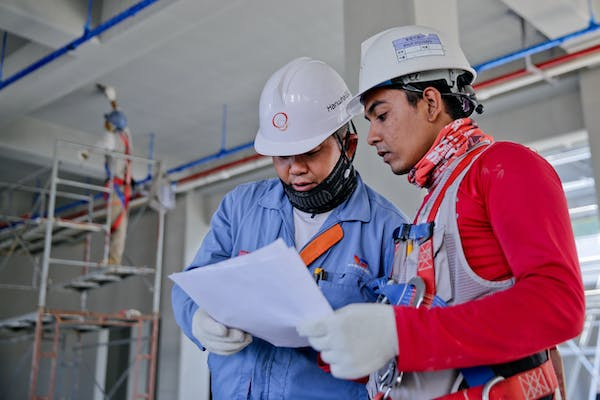Digital utility mapping has become an invaluable asset in the construction industry. It provides a comprehensive picture of all physical infrastructure, allowing for efficient and accurate planning and implementation of projects.
As a digital utility mapping expert, I have seen first-hand how beneficial it can be. In this article, I will outline five benefits of digital utility mapping for construction projects.
Digital utility mapping is a revolutionary technology that has had a tremendous positive impact on the construction industry. With its ability to provide real-time data and detailed visuals in 2D and 3D formats, it offers insight into the entire project lifecycle.
From planning through completion, digital utility mapping gives construction teams the information they need to make informed decisions that improve safety and efficiency while reducing delays and costs.
Keep reading to learn more about these five key advantages of digital utility mapping for construction projects.
Improved Safety
Digital utility mapping is an invaluable tool for construction projects, providing numerous benefits related to safety.
It allows for an accurate overview of the area being worked on before any physical changes take place. Knowing the locations of underground infrastructure helps contractors plan out their worksites and avoid potential hazards that could disrupt or damage existing utilities.
The use of digital mapping technology can also provide peace of mind to workers onsite, as they can be sure they are working in line with regulations and avoiding disturbing existing services.
By having a comprehensive understanding of the subsurface area, construction teams can plan and execute their projects more efficiently, reducing the risk of accidents and costly delays.
Overall, digital utility mapping has revolutionized safety protocols on construction projects, allowing contractors to create detailed plans before breaking ground and reducing risks associated with underground utilities. This ultimately leads to smoother operations and better outcomes for all involved in the project.
Enhanced Planning
Having discussed the improved safety that digital utility mapping offers for construction projects, let us now consider the enhanced planning opportunities it provides.
Imagining a world in which construction projects are planned with pinpoint accuracy and precision is no longer a pipe dream – thanks to digital utility mapping.
The advantages of this technology are manifold:
- It helps project managers create accurate 3D models of their sites and identify concealed utilities before any work begins;
- It allows for faster design review and approval processes;
- It reduces the need for site visits, speeding up processes and saving time;
- It makes it easier to identify areas that require additional work or further investigation.
In short, digital utility mapping is indispensable in helping project managers assess, plan and manage their projects more effectively – delivering smoother operations and better results in less time than ever before.
Thanks to its ability to capture 3D data quickly and accurately, it has become an incredibly valuable tool in modern construction projects, allowing project managers to maximize efficiency while meeting deadlines and minimizing risks.
Accurate Visualization
Digital utility mapping provides an invaluable resource for construction projects. Accurate visualization of the subsurface environment is essential to create a safe and efficient project.
| Emotional Reactions | Utility Mapping Benefits | Consequences of Improper Visualization |
|---|---|---|
| Confidence | Clear Path Forward | Costly Mistakes |
| Peace of Mind | Quality Assurance | Inefficient Project Execution |
| Optimism | Effective Planning | Unforeseen Challenges |
By accurately mapping utilities at the beginning of a project, construction professionals can have confidence in their decisions and plans. This peace of mind allows for effective planning and quality assurance, which are vital to ensure a safe work site and successful outcome.
With proper visualization, costly mistakes, inefficient project execution, and unforeseen challenges can be avoided. Thus, digital utility mapping provides an indispensable resource for any construction endeavor.
Faster Decision-Making
Mapping digital utilities for construction projects can revolutionize the way decisions are made. With the ability to quickly visualize and analyze data, project managers can make better-informed decisions faster than ever before.
Digital utility mapping provides an intuitive interface that is easy to use, allowing users to quickly identify areas of concern and make adjustments as needed. Using this technology, it’s possible to gain insights about site conditions and potential issues in a fraction of the time it would have taken with manual methods.
By leveraging high-resolution satellite imagery to create detailed maps of underground infrastructure, decision-makers can get a clear picture of their project’s progress and plan out their next steps accordingly. Furthermore, digital utility mapping adds an extra layer of safety by ensuring that workers stay away from hazardous materials or areas that may present potential risks during excavation.
To ensure accuracy and minimize errors, digital utility mapping allows users to easily identify discrepancies between physical infrastructure and design plans – something which would have been difficult or impossible with manual methods. Having this level of detail in hand helps speed up the decision-making process so teams can move forward more quickly with confidence in the results.
This technology ultimately reduces stress on project managers while giving them access to reliable data they need to complete their projects efficiently and effectively.
Reduced Delays And Costs
Digital utility mapping is a valuable tool for construction projects, providing numerous benefits in terms of reduced delays and costs. The process involves mapping out the exact locations of existing utilities in the project area before construction begins.
This allows contractors to avoid any potential delays caused by unanticipated utility lines or services. By knowing in advance where the lines are located, contractors can accurately plan the best route for their equipment and materials, saving time and money on unnecessary detours.
Another benefit of digital utility mapping is increased safety. By locating utilities early on in the project, workers can be alerted to any potential hazards before they start working in the area. This helps to prevent accidents and injuries, which could result in costly litigation or fines if an incident occurs during construction.

Additionally, contractors can use these detailed maps as a reference point when setting up any heavy machinery or other equipment that could potentially damage underground infrastructure or cause disruption to utility service.
Not only does digital utility mapping reduce delays and costs, but it also helps ensure that projects are completed with minimal disruption to local communities. Once the details of existing utilities have been mapped out, contractors can develop strategies that minimize disruption while still meeting project timelines and budgets.
As a result, construction projects are completed faster while minimizing disruptions such as noise or dust pollution that could affect nearby residents or businesses.
Real-Time Data Access
The advantages of digital utility mapping for construction projects have been made clear in terms of reduced delays and costs. It’s now time to explore the real-time data access that digital utility mapping provides.
This real-time access can significantly reduce the amount of time it takes to complete a project, as well as the overall cost. Digital utility mapping allows for an almost instantaneous response to changes onsite. With this knowledge, contractors are able to make informed decisions quickly, reducing their risk of errors or delays. It also helps to reduce labor costs by allowing workers to be more efficient with their time and resources.
The accuracy of the data provided by digital utility mapping is also highly beneficial. Contractors are able to view up-to-date plans, so they can plan out projects accurately from the outset. This reduces the chances of expensive mistakes being made further down the line as any changes can be identified early on in the process.
In addition, digital utility mapping offers:
- Greater transparency for stakeholders and better communication between contractors and clients
- Accurate records that can be accessed easily from anywhere at any time
- Increased safety onsite due to having an accurate understanding of buried infrastructure
- Reduced costs associated with surveying and mapping, as well as fewer delays related to project completion.
Conclusion
Digital utility mapping has been an invaluable tool for construction projects. It’s like a map that helps you find the best route to complete a project, while avoiding obstacles and delays.
With its improved safety, enhanced planning, accurate visualization, faster decision-making and reduced costs, it’s easy to see why this technology is so important.
I’m confident that with digital utility mapping, we can keep our construction projects on track and achieve the highest standards of quality without compromising safety.

